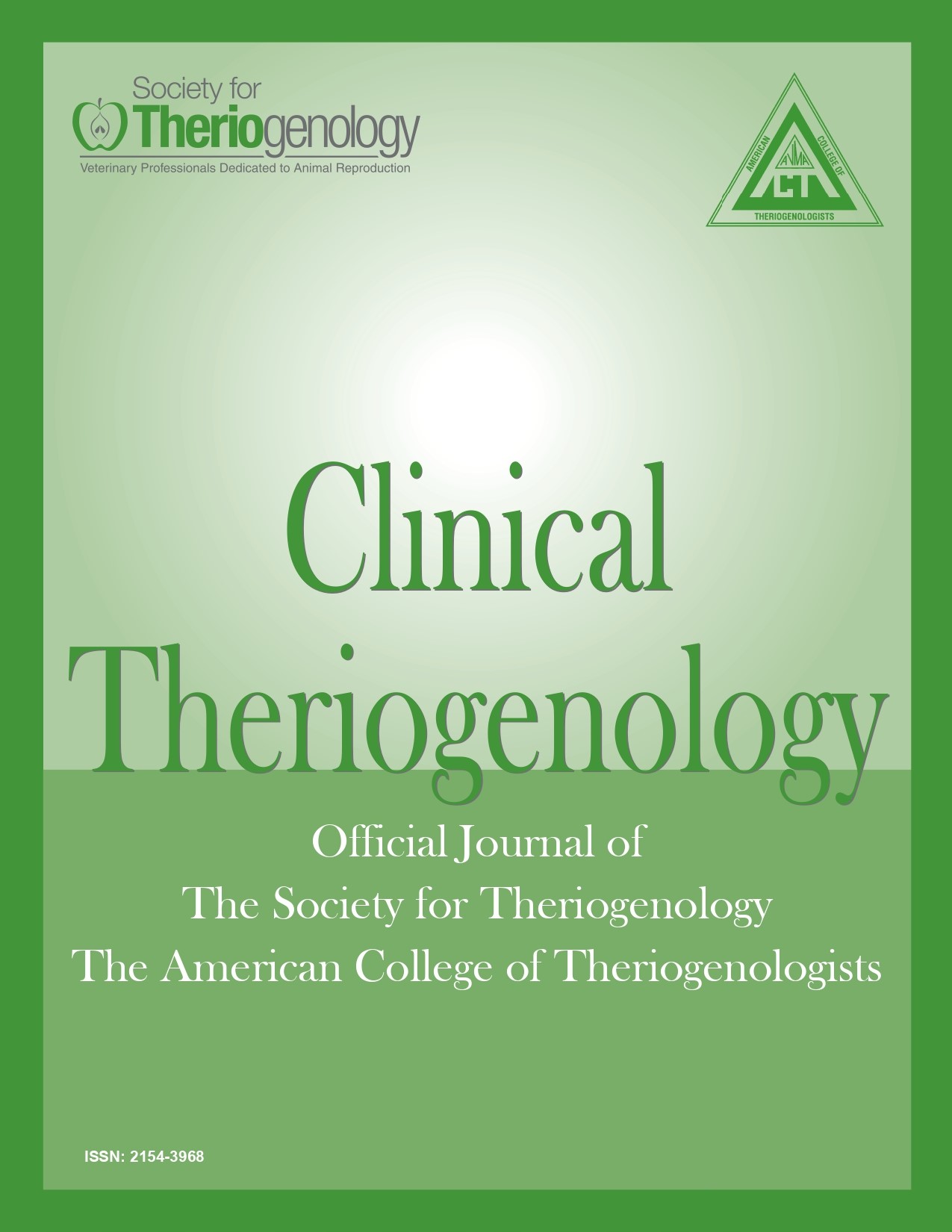Clinical findings in a Thoroughbred mare presenting with abnormal pattern of intra-uterine cysts
Abstract
Intramural uterine cysts visualized on transrectal ultrasonography can be of several origins. Lymphatic cysts are the most common but these often are intraluminal and cause minimal distortion of the muscular layer of the uterine wall. Other differential diagnoses for large intramural soft tissue masses include hematomas, abscesses, leiomyoma, adenocarcinoma, or melanomas. This abstract describes the history and clinical findings of a mare with a large intramural and intraluminal cystic mass. A 19-yearold, gray, barren Thoroughbred mare was presented for reproductive evaluation following pregnancy loss the previous year between 28 and 42 days of gestation, of an embryo located in the left uterine horn. Transrectal ultrasonography during diestrus revealed numerous, variably sized (5 - 35 mm), hypoechoic multi-loculated cysts dispersed throughout the uterus. A large cluster of septated, hypoechoic fluid filled compartments (10 - 40 mm) were present in the base of the left horn, which seemed to extend into the myometrium and distort the cranio-ventral aspect of the left uterine wall. A small volume flush was performed and the efflux revealed no inflammation and no bacterial growth on aerobic culture. Hysteroscopy revealed several clear-yellow cystic structures consistent with lymphatic cysts, and several small blue-gray structures consistent with sub-epithelial melanomas. Biopsy and fluid analysis was performed on the large multi-loculated cyst present in the left horn and an alligator biopsy instrument was used to remove the cyst at its base. Cytologic evaluation of the cyst’s contents revealed a rare neutrophil and numerous lymphocytes (40-100 per hpf). Histologic evaluation of the biopsied tissue revealed a thin cyst capsule (1- 2 mm) with a low columnar epithelium, areas of fibroblasts and minimal to no evidence of glands present in the stroma. The cyst lumen was filled with eosinophilic material and numerous lymphocytes, consistent with a lymphatic cyst. Following hysteroscopy, transrectal ultrasonography was performed with the uterus infused with saline to evaluate the uterine wall. The uterine wall returned to uniform thickness and echogenicity, with the region of the removed cyst (2 cm x 1 cm) protruding slightly from the ventral aspect of the left uterine horn. This case summarizes the finding and removal of a lymphatic cyst which severely distorted the appearance of the uterine wall, and validates the use of hysteroscopy and targeted biopsy for evaluation of uterine pathology.
Downloads

This work is licensed under a Creative Commons Attribution-NonCommercial 4.0 International License.
Authors retain copyright of their work, with first publication rights granted to Clinical Theriogenology. Read more about copyright and licensing here.





